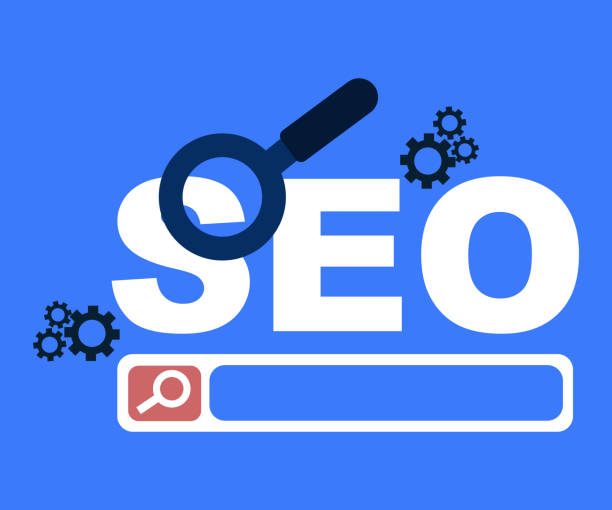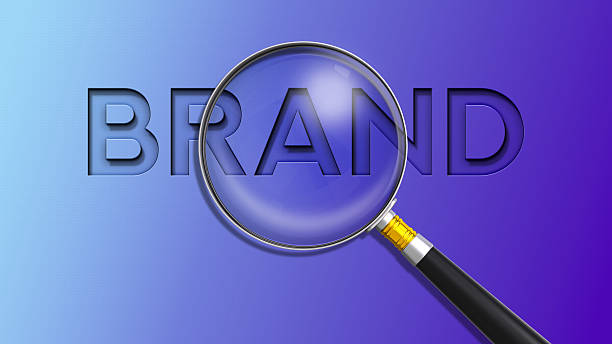Unveiling the Hidden Power of On-Page SEO

Have you ever wondered how some websites always rank at the top of search results? The answer often lies in the #concepts and #techniques of #On-Page_SEO.
On-page SEO, or internal website optimization, is the process of optimizing various elements within your website to improve its ranking in search engines. This includes everything from site structure and content to user experience.
A thorough understanding of this topic is the first step to mastering the art of visibility in the digital world.
In this explanatory article, we intend to unravel the complexities of this field for you.
Search engines like Google consider multiple factors for ranking pages, and many of these factors are directly related to your site’s structure and content.
Strong on-page SEO not only helps search engines better understand your content but also provides a better user experience for visitors. This means visitors can navigate your site more easily and find the information they need.
Ultimately, this positive interaction sends positive signals to both the user and Google’s algorithms, which can help increase your credibility and ranking.
This aspect of search engine optimization is less known but extremely powerful, and ignoring it can result in the loss of valuable traffic.
In the remainder of this journey, we will delve into the technical and practical details of on-page SEO.
Does your current website reflect your brand’s credibility as it should? Or does it scare away potential customers?
Rasavab, with years of experience in professional corporate website design, is your comprehensive solution.
✅ A modern, beautiful website tailored to your brand identity
✅ Significant increase in lead and new customer acquisition
⚡ Contact Rasavab now for a free consultation on corporate website design!
The Technical Foundation of On-Page SEO: The Path to Top Rankings

The foundation of any successful on-page SEO strategy lies in the technical aspects of the site.
Without a healthy technical infrastructure, even the best content may never be properly seen by search engines.
Technical aspects such as Crawlability and Indexability are of paramount importance.
Crawlability refers to the ability of search engine bots to access and read your site’s pages.
Robots.txt files, XML sitemaps, and URL structure all play a role in this area.
Ensuring that no important pages are blocked and all pages are correctly included in the sitemap is the first step.
Indexability also refers to the search engine’s ability to add your pages to its index so they can appear in search results.noindex tags, incorrect redirects, and server errors can prevent pages from being indexed.
Regularly checking Google Search Console reports to find and fix these issues is an essential action. Furthermore, readable and logical URL structures are not only beneficial for users but also help search engines understand your content hierarchy.
The use of HTTPS for site security, fast loading speed, and optimization of CSS and JavaScript files are also other technical pillars of on-page SEO that directly impact user experience and ultimately your ranking.
These analytical and technical aspects are the foundation of any on-page optimization specialist’s work.
Content Optimization: The Master Key to On-Page SEO Success

Content is the heart of every website, and in the realm of on-page SEO, its optimization is of particular importance.
Content optimization is not merely about stuffing keywords into the text, but about producing valuable, comprehensive, and user-relevant content.
This includes choosing appropriate keywords, using them naturally in titles, subtitles, body text, and meta tags, as well as logically structuring the content.
Every part of your content should be useful to the user and answer their questions. Content quality, more than anything else, is the factor that keeps users on the site and reduces bounce rate, sending a positive signal to search engines.
To create optimized content, keyword research is a vital educational step.
Tools like Google Keyword Planner or Ahrefs can help you identify high-volume and low-competition keywords.
Once identified, these keywords should be used naturally in the text, avoiding excessive repetition (keyword stuffing).
Using synonyms and Latent Semantic Indexing (LSI) keywords also helps search engines better understand the overall concept of your content.
Furthermore, the use of H1 to H6 tags for content structuring and alt tags for images are also pillars of on-page SEO for content optimization.
The ultimate goal is to produce content that is both understandable for search engines and engaging and informative for users.
This internal optimization is your key to success.
| Optimization Factor | Description | Importance |
|---|---|---|
| Keyword Research | Identifying words and phrases that your target audience searches for to find content. | High |
| Keyword Usage in Title and Meta Description | Using the main keyword in the title tag and meta description to attract user and search engine attention. | Very High |
| Using Heading Tags (H1-H6) | Structuring content with headings and subheadings for better readability and to assist search engines. | High |
| Content Quality and Depth | Producing comprehensive, valuable, and accurate content that answers user needs and attracts them. | Very High |
| Text Readability | Using short paragraphs, simple sentences, lists, and images to improve readability. | High |
| Image Optimization (Alt Text) | Adding alternative text for images to help search engines understand their content. | Medium |
| Unique Content (No Copy) | Producing original content to avoid penalties for duplicate content. | Very High |
User Experience and Site Speed: Two Inseparable Companions of On-Page SEO

Search engines, especially Google, are constantly improving their algorithms to provide the best results to users.
Meanwhile, User Experience (UX) and site speed have become two crucial factors in on-page SEO.
A website that loads quickly and has easy navigation not only keeps users satisfied but also sends positive signals to search engines.
Slow site speed can lead to a high bounce rate and a decrease in search result rankings.
Core Web Vitals, a set of metrics defined by Google, directly refer to user experience and site speed.
These metrics include Largest Contentful Paint (LCP) for loading speed, First Input Delay (FID) for responsiveness, and Cumulative Layout Shift (CLS) for visual stability.
Optimizing images, compressing CSS and JavaScript files, using browser caching, and choosing suitable hosting are all guidelines that help improve these metrics.
Furthermore, responsive design that displays your site well on all devices is of high importance.
A thought-provoking content in this area is: “Do you really want organic traffic for your site if your users flee due to slow speed?” The answer is clear: speed and UX are the main pillars of sustainable on-page optimization.
These factors directly influence your site’s ranking in search results.
Losing potential customers due to an unprofessional website? Rasavab is your answer! With our specialized corporate website design services:
✅ Enhance your business’s credibility and position
✅ Experience more targeted customer acquisition
⚡ Act now to receive a free consultation!
Internal Linking: A Vital Artery for On-Page SEO

Internal linking is one of the most powerful, yet often overlooked, aspects of on-page SEO.
This process involves creating links from one page on your website to another page on the same website.
Internal links play a crucial role in distributing ranking power (PageRank) across your site, helping crawlers discover new pages, and understanding your content’s structure and hierarchy.
The stronger and more logical your internal links are, the more likely your pages are to achieve better rankings and users will spend more time on your site.
An analytical and intelligent internal linking strategy involves using relevant and descriptive anchor texts (link text).
Anchor texts should inform search engines and users what the destination page is about.
Also, linking from high-authority pages to more important and newer pages on the site helps distribute “SEO value” across the site.
Creating a deep and logical linking structure, whether hierarchical or clustered, helps search engines understand the relationships between different topics.
This is not only beneficial for search engines but also improves the user’s navigation experience and helps them easily access relevant information.
In summary, internal linking strengthens your site’s optimization from within and transforms it into a cohesive network of information that is appealing to both users and search engines.
This is a fundamental pillar in modern on-page site optimization strategies.
The Importance of Structured Data in Advanced On-Page SEO

In today’s complex web world, simply having great content is not enough; search engines need to understand this content in a structured way.
This is where Structured Data comes into play.
Structured data are specific codes that allow webmasters to provide search engines with additional and more precise information about the content of their pages.
This information helps search engines better categorize and understand your content, which can lead to the display of Rich Snippets in search results.
The use of structured data is a specialized and advanced step in on-page SEO that can significantly impact your Click-Through Rate (CTR).
Rich snippets include additional information such as star ratings for reviews, product prices, recipes, or event times, which are displayed alongside the normal title and description in search results.
This more visually appealing display encourages users to click on your site more, even if you are not in the first position.
For implementing structured data, Schema.org is typically used, which is a common standard for various types of data.
Google, Bing, Yahoo, and Yandex all support this standard.
This guidance helps you optimize your site for more attractive displays in search results and gain an edge over others in the on-page SEO competition.
Proper use of this data helps search engines better understand your content.
On-Page SEO in the Age of Mobile and Desktop: A Deeper Look

With the increasing use of smartphones for internet access, the approach to on-page SEO has also undergone a transformation.
Since 2018, Google has shifted to mobile-first indexing, meaning it primarily reviews the mobile version of your site for ranking purposes.
This was an important development and game-changer in the world of SEO, doubling the importance of responsive design and mobile user experience.
A site that does not display correctly on mobile, has difficult navigation, or loads slowly, even if it is excellent on desktop, will face overall ranking issues.
Mobile optimization includes ensuring responsive design, using readable fonts and clickable buttons, avoiding intrusive pop-ups, and optimizing images for fast loading on mobile networks.
There are subtle differences between optimizing for mobile and desktop that an on-page SEO specialist should pay attention to.
For instance, UI/UX design for smaller screens requires a different approach.
Also, mobile loading speed becomes more critical due to bandwidth and device hardware limitations.
This explanatory and in-depth approach demonstrates how on-page SEO must respond to evolving user needs and technology, and why a one-size-fits-all approach for all devices is no longer effective.
Optimizing your site for both platforms is a necessity, not an option.
| SEO Factor | Mobile Considerations | Desktop Considerations |
|---|---|---|
| Web Design | Responsive or Mobile-Friendly (AMP, PWA) | Traditional appearance and navigation, larger screen size |
| Loading Speed | Highly critical (Mobile Core Web Vitals); image and script optimization. | Important, but has more tolerance for loading. |
| User Experience (UX) | Larger buttons, readable fonts, no need to zoom, easy finger navigation. | Mouse navigation, wider menus. |
| Content | More concise content, high scannability, clear CTAs. | Ability to present longer and more detailed content. |
| Pop-ups and Interstitials | Should be minimal to avoid disrupting UX (especially full-screen pop-ups). | Have fewer restrictions, but should still be used with caution. |
| Indexing | Mobile-First Indexing by Google. | Desktop version was considered the primary version. |
Monitoring and Analyzing On-Page SEO Performance: A Crucial Step in Continuous Optimization
![]()
Initial optimization for on-page SEO alone is not enough; real success lies in continuous monitoring, analysis, and improvement.
The world of SEO is constantly changing, and search engine algorithms are regularly updated.
Therefore, using analytics and reporting tools to track your site’s performance is a crucial step in any on-page SEO strategy.
Tools like Google Analytics and Google Search Console provide valuable information about site traffic, keywords, bounce rate, traffic sources, and crawl errors.
Analyzing this data helps you identify the strengths and weaknesses of your internal optimization strategy.
For example, if you notice that a particular page has a high bounce rate, it might be an indication of low-quality content or slow loading speed.
If specific keywords are not attracting the expected traffic, you might need further optimization or a change in your content strategy.
A thought-provoking content at this stage is: “Do you know why visitors leave page X?” By deeply analyzing the data, you can answer these questions.
This analytical and data-driven approach allows you to make more informed decisions to improve your on-page SEO performance and prevent resource waste.
Continuously monitoring competitors and examining their strategies can also provide new insights for optimization.
Website optimization is an endless process, and desired results can only be achieved through meticulous monitoring.
Did you know that 94% of a first impression of a company is related to its website design?
Rasavab, by offering professional corporate website design services, helps you create the best first impression.
✅ Create a professional and trustworthy image for your brand
✅ Easier attraction of potential customers and improvement of online standing
⚡ Get a free corporate website design consultation
Common Mistakes in On-Page SEO and How to Avoid Them
![]()
While on-page SEO can yield brilliant results, there are also common mistakes that can nullify your efforts.
Identifying and avoiding these errors is crucial for long-term success in website optimization.
One of the most common mistakes is ignoring user search intent.
If your content does not correctly answer what the user is looking for, even with relevant keywords, you will still not succeed in ranking.
Another is excessive keyword usage (keyword stuffing), which is not only detected by search engines and results in penalties but also severely diminishes the user experience.
Lack of optimization for Title Tags and Meta Descriptions is another common mistake.
These elements are the first thing users see in search results and should be engaging and contain primary keywords to increase click-through rates.
Another tip is neglecting site speed and mobile user experience, which was mentioned earlier and can lead to losing a large portion of your audience.
Also, weak or absent internal linking prevents search engines from connecting different pages on your site and benefiting from their SEO value.
Finally, ignoring 404 errors and incorrect redirects can also harm site crawling and indexability.
By avoiding these mistakes and adopting an educational approach to on-page SEO, you can unleash your site’s full potential for search engines and advance your internal site optimization in the best way.
The Future of On-Page SEO: AI and Beyond

The world of on-page SEO is not static and is constantly evolving.
With significant advancements in artificial intelligence and machine learning, the future of on-page SEO will also undergo major changes.
Search engine algorithms become smarter with each update and gain a greater ability to understand natural language, user intent, and the actual quality of content.
This means that merely optimizing for keywords will no longer suffice; instead, producing comprehensive, authoritative, and in-depth content that addresses all aspects of a topic will become more important.
Voice Search is also one of the important future trends that will significantly impact on-page SEO.
In voice search, users employ longer and more natural phrases that more closely resemble everyday conversations.
Optimizing for this type of search requires understanding full questions and direct answers.
Additionally, the emergence of generative AI and tools like chatbots has led to content and answers being provided more directly to users, which may result in fewer clicks on websites.
In this new world, engaging, interactive, and highly specialized content that builds user trust will be more valuable than ever.
Ultimately, success in the future of on-page SEO depends on our ability to adapt to these changes and focus on providing the best experience and content for humans, not just machines.
This will be an exciting challenge for every on-page optimization specialist.
Frequently Asked Questions
| Question | Answer |
|---|---|
| What is a Meta Title and why is it important in on-page SEO? | The meta title is the most important on-page SEO element displayed at the top of the browser tab and in search results. It helps search engines and users understand the main topic of the page and should include the main keyword. |
| What role does Meta Description play in on-page SEO? | The meta description is a short summary of the page’s content displayed below the title in search results. Although it doesn’t directly affect ranking, its attractiveness can increase the Click-Through Rate (CTR). |
| How should keywords be used in page content? | Keywords should be used naturally and relevantly in strategic locations such as the title, headings, first paragraph, and body text. Avoid excessive keyword stuffing. |
| What is the importance of high-quality and comprehensive content in on-page SEO? | High-quality, unique, informative, and comprehensive content that addresses user needs is of paramount importance. Search engines give higher rankings to content that creates real value. |
| What is the purpose of Heading tags (H1-H6) in on-page SEO structure? | Heading tags (H1, H2, H3, etc.) are used to structure content and indicate the importance of different sections. H1 is the main title of the page, and each page should only have one H1. Other tags are used for subheadings. |
| How to optimize images to improve on-page SEO? | To optimize images, use descriptive Alt Text that includes relevant keywords, reduce image file size without compromising quality, and use meaningful and relevant file names. |
| What are the characteristics of an SEO-friendly URL for on-page SEO? | A friendly URL should be short, readable, descriptive, include main keywords, and be free of extra characters. The URL structure should be hierarchical and logical to be understandable for both users and search engines. |
| How does Internal Linking help with on-page SEO? | Internal linking, by connecting related pages, helps users and search engine crawlers better understand the site’s structure, transfer page authority, and increase user dwell time on the site. |
| What is the impact of page loading speed on on-page SEO? | High loading speed is crucial for both user experience and SEO ranking. Slower pages might be ignored by search engines and lead to an increased Bounce Rate. |
| Why is Mobile-Friendliness highly important in on-page SEO? | Given the increasing number of searches via mobile devices, having a responsive and mobile-friendly website is essential for user experience and ranking in search results (Google’s mobile-first indexing). |
And other advertising services from Rasavab Advertising Agency
Smart Advertorials: A professional solution for user engagement with a focus on attractive UI design.
Smart Direct Marketing: An effective tool for customer acquisition with the help of attractive UI design.
Smart Data Analysis: An innovative platform for improving SEO ranking through Google Ads management.
Smart Advertising Campaigns: A new service to increase website traffic through Google Ads management.
Smart Direct Marketing: Professional optimization for sales growth using custom programming.
And over a hundred other services in internet advertising, advertising consultation, and organizational solutions
Internet Advertising | Advertising Strategy | Advertorials
Resources
Comprehensive On-Page SEO Guide
Key Website Optimization Tips
Advanced SEO Strategies
Importance of Content SEO in Ranking
? With Rasavab Afarin, your business takes flight in the digital world! We create a powerful and lasting presence for you with comprehensive digital marketing services, including SEO-optimized website design. To view our portfolio and get a free consultation, contact us now.
📍 Tehran, Mirdamad Street, next to Bank Markazi, Kazeroon Janubi Alley, Ramin Alley, No. 6



